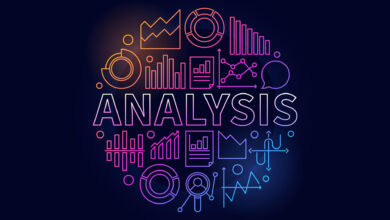Best Technical Analysis Tools for Cryptocurrency

Candlestick charts are a fundamental tool in the world of technical analysis for understanding price action in cryptocurrency markets. These charts provide valuable insights into the buying and selling dynamics, allowing traders to make informed decisions. By examining the patterns and formations formed by the candles, traders can gauge market sentiment and identify potential trend reversals or continuations. With the ability to identify key price levels and combine with other technical indicators, candlestick charts offer a comprehensive view of market conditions. In this article at Forvest’s Blog, we will explore the power of candlestick charts and how they can unlock valuable price action insights for cryptocurrency traders.
Candlestick Charts: Unlocking Price Action Insights
Candlestick charts are one of the most popular and widely used tools in technical analysis for understanding price action in the cryptocurrency market. These charts provide valuable insights into the dynamics between buyers and sellers, allowing traders to make informed decisions.
The candlestick chart consists of individual “candles” that represent a specific time period, such as an hour, a day, or a week. Each candle has four main components: the open, close, high, and low prices. The body of the candle is formed by the open and close prices, while the high and low prices are represented by the wicks or shadows.
By analyzing the different patterns and formations formed by these candles, traders can gain valuable information about market sentiment and potential price reversals. For example, a bullish candle with a long body and short wicks indicates strong buying pressure and a potential uptrend, while a bearish candle with a long upper wick suggests selling pressure and a possible downtrend.
Moreover, candlestick charts provide traders with various patterns that can indicate trend reversals or continuation. Some commonly recognized patterns include doji, hammer, shooting star, engulfing, and spinning top, among others. These patterns, when combined with other technical indicators, can provide powerful signals for traders.
Additionally, candlestick charts can be used in conjunction with support and resistance levels to identify key price levels where buying or selling pressure is likely to be strong. Traders often look for candlestick patterns forming near these levels to confirm potential trade setups.
It’s important to note that while candlestick charts offer valuable insights, they should not be used in isolation. Traders should consider other technical indicators, fundamental analysis, and market conditions to make well-rounded trading decisions.
Moving Averages: Smoothing Out Price Data for Trend Analysis
In the world of technical analysis, moving averages are powerful tools that help traders identify and analyze trends in cryptocurrency markets. By smoothing out price data over a specific period, moving averages provide a clearer picture of the underlying trend and remove short-term price fluctuations. This enables traders to make more informed decisions based on the overall direction of the market.
A moving average is calculated by taking the average closing price of a cryptocurrency over a certain time period. The resulting line is plotted on a chart, representing the smoothed average price over that period. The most commonly used time periods for moving averages are 50, 100, and 200 days, although traders can customize the period based on their trading style and preferences.
Moving averages can be classified into two main types: simple moving averages (SMA) and exponential moving averages (EMA). SMA gives equal weight to each price point in the selected period, while EMA places more weight on recent prices, making it more responsive to recent market changes.
Traders use moving averages in various ways. One popular strategy is to observe the crossover of different moving averages. When a shorter-term moving average crosses above a longer-term moving average, it is considered a bullish signal, indicating a potential upward trend. Conversely, when the shorter-term moving average crosses below the longer-term moving average, it is seen as a bearish signal, suggesting a possible downward trend.
Moving averages also act as dynamic support and resistance levels. Traders often look for prices to bounce off the moving average during a trend, providing opportunities to enter or exit positions. Additionally, moving averages can be combined with other technical indicators to generate more robust trading signals.
Relative Strength Index (RSI): Assessing Market Momentum
The Relative Strength Index (RSI) is a popular technical analysis tool used to assess the momentum and strength of price movements in the cryptocurrency analysis sofware. It provides traders with valuable insights into whether a particular cryptocurrency is overbought or oversold, helping them make informed trading decisions.
The RSI is a bounded oscillator that ranges from 0 to 100. It compares the magnitude of recent gains to recent losses over a specified period and generates a value that indicates the strength and speed of price movements. A reading above 70 typically suggests that a cryptocurrency is overbought and may be due for a price correction, while a reading below 30 indicates oversold conditions and a potential for a price rebound.
Traders often use the RSI to identify potential trend reversals or confirm the strength of an existing trend. For example, if a cryptocurrency’s price is in an uptrend but the RSI shows a divergence by making lower highs, it could indicate a weakening momentum and a possible trend reversal. Conversely, if the RSI confirms the strength of an uptrend by making higher highs alongside price increases, it provides additional confidence to traders.
Moreover, the RSI can be used in conjunction with other technical indicators to enhance trading strategies. For instance, traders may combine RSI signals with trendlines, support and resistance levels, or moving averages to validate their trading decisions.
It’s important to note that the RSI is not a standalone indicator and should be used in conjunction with other analysis tools. While it provides valuable insights into market momentum, it is not infallible and can produce false signals during periods of high volatility.
Bollinger Bands: Detecting Volatility and Price Squeeze
Bollinger Bands are a widely used technical analysis tools for crypto that helps traders detect volatility and identify potential price squeeze situations in the cryptocurrency market. Developed by John Bollinger, this indicator consists of a middle band, an upper band, and a lower band, which are based on the standard deviation of price movements.
The middle band is typically a simple moving average, while the upper and lower bands are positioned at a certain number of standard deviations away from the middle band. The width of the bands expands and contracts based on market volatility. During periods of high volatility, the bands widen, while they narrow during low volatility periods.

Traders use Bollinger Bands to identify potential breakouts and reversals. When the price approaches the upper band, it suggests that the cryptocurrency may be overbought, indicating a potential reversal or price pullback. Conversely, when the price approaches the lower band, it indicates potential oversold conditions and a possible price rebound.
One of the key concepts associated with Bollinger Bands is the price squeeze. A price squeeze occurs when the bands contract, indicating a period of low volatility and potentially signaling an upcoming significant price move. Traders often look for a squeeze followed by a breakout, which can provide opportunities for profitable trades.
Additionally, Bollinger Bands can be used in conjunction with other technical indicators to validate trading signals. For example, traders may combine Bollinger Bands with momentum oscillators like the Relative Strength Index (RSI) or Moving Average Convergence Divergence (MACD) to confirm potential buy or sell signals.
It’s important to note that Bollinger Bands should not be used as standalone indicators and should be complemented with thorough market analysis. False signals can occur, especially during periods of choppy or sideways price action. Therefore, it’s crucial to consider other factors such as volume, trend analysis, and fundamental news before making trading decisions.
Fibonacci Retracement: Identifying Potential Support and Resistance Levels
Fibonacci retracement is a best technical analysis tools for cryptocurrency used by traders to identify potential support and resistance levels in the cryptocurrency market. Based on the Fibonacci sequence, this tool helps determine areas where price corrections or reversals may occur within a larger trend.
The Fibonacci sequence is a series of numbers in which each number is the sum of the two preceding ones: 0, 1, 1, 2, 3, 5, 8, 13, 21, and so on. The Fibonacci retracement levels, derived from these numbers, are horizontal lines drawn on a price chart at key ratios of 23.6%, 38.2%, 50%, 61.8%, and 78.6%.
Traders use Fibonacci retracement to identify potential areas of support (where the price may find buying interest) and resistance (where selling pressure may increase). These levels act as psychological price zones, as many traders use them to determine entry and exit points for their trades.
When a cryptocurrency’s price is in an uptrend, traders draw Fibonacci retracement levels from the swing low to the swing high. The retracement levels indicate potential support levels where the price could find buying interest and bounce back up. Conversely, in a downtrend, the retracement levels are drawn from the swing high to the swing low, identifying potential resistance levels where the price could face selling pressure.
Traders also look for confluence between Fibonacci retracement levels and other technical indicators, such as moving averages or trendlines, to increase the significance of these levels. When multiple indicators align at a particular Fibonacci level, it strengthens the likelihood of price reacting to that level.
It’s important to note that Fibonacci retracement levels are not foolproof and should be used in conjunction with other crypto analysis software tools. Sometimes price may briefly break through a retracement level before continuing its trend. Therefore, it’s crucial to consider other factors, such as volume, candlestick patterns, and fundamental news, to validate potential support and resistance levels.
Conclusion
In conclusion, when it comes to analyzing the cryptocurrency market, having access to the best technical analysis tools for cryptocurrency is crucial. These tools provide valuable insights and help traders make informed decisions. Throughout this article, we have explored some of the top technical analysis tools for crypto, including candlestick charts, moving averages, the Relative Strength Index (RSI), Bollinger Bands, and Fibonacci retracement.
By leveraging these tools, traders can unlock valuable information about price action, identify trends, assess market momentum, detect volatility, and pinpoint potential support and resistance levels. However, it’s important to remember that no single indicator can guarantee success in the highly volatile cryptocurrency analysis software. It’s always recommended to use these tools in conjunction with other analysis techniques and risk management strategies.
Forvest is committed to providing valuable insights and resources for cryptocurrency traders and investors. Through their Ethereum Vs Bitcoin Indicator and expert analysis, Forvest offers a comprehensive approach to understanding the dynamics between these two leading cryptocurrencies. By staying informed and utilizing the right tools, traders can navigate the cryptocurrency market with more confidence and increase their chances of making profitable trades.
Rating of this post
Rate
If you enjoyed this article, please rate it.



